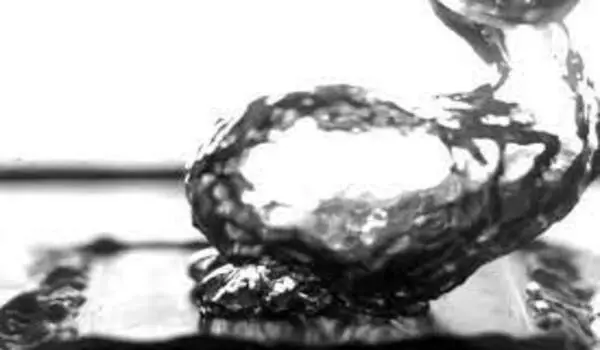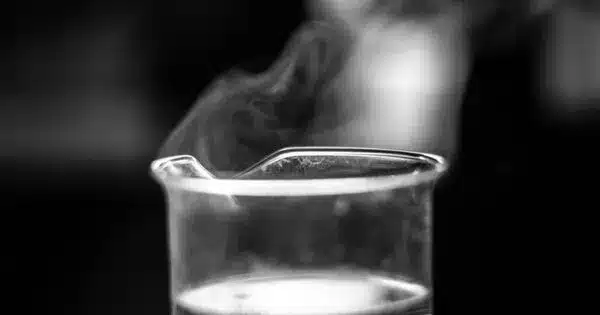Evaporation occurs all the time, from sweat cooling our bodies to dew burning off in the morning light. However, science’s understanding of this omnipresent process may have been missing a piece all along.
In recent years, several researchers have been perplexed by the discovery that water in their tests, which was trapped in a sponge-like substance known as a hydrogel, was evaporating at a faster rate than could be explained by the quantity of heat, or thermal energy, that the water was getting. And the excess has been significant, doubling, tripling, or more, the theoretical maximum rate.
A team of researchers at MIT has reached a startling conclusion after conducting a series of new experiments and simulations, as well as reexamining some of the results from various groups that claimed to have exceeded the thermal limit: under certain conditions, at the interface where water meets air, light can directly cause evaporation without the need for heat, and it does so even more efficiently than heat. The water in these trials was kept in a hydrogel polymer, but the researchers believe the phenomena might occur in other settings as well.
The findings were published in PNAS by MIT postdoc Yaodong Tu, mechanical engineering professor Gang Chen, and four others.
We tested it under our solar simulator, and it worked, verifying the abnormally high evaporation rate. So, we believe them now.
Chen and Tu
According to the researchers, the phenomena may have a role in the development and growth of fog and clouds and so should be incorporated into climate models to increase their accuracy. It may play a key role in many industrial processes, such as solar-powered water desalination, potentially offering alternatives to the phase of first converting sunlight to heat.
The new findings come as a surprise because water itself does not absorb light to any significant degree. That’s why you can see clearly through many feet of clean water to the surface below. So, when the team initially began exploring the process of solar evaporation for desalination, they first put particles of a black, light-absorbing material in a container of water to help convert the sunlight to heat.
The team then came upon the work of another group that had reached an evaporation rate double the thermal limit – which is the maximum amount of evaporation that can occur for a given input of heat, based on basic physical principles such as energy conservation. The water was tied together in a hydrogel throughout these trials. Despite their initial skepticism, Chen and Tu began their own hydrogel studies, using a fragment of the material from the other group. “We tested it under our solar simulator, and it worked,” says Chen, verifying the abnormally high evaporation rate. “So, we believed them now.” Chen and Tu then began creating and testing their own hydrogels.
They began to suspect that the excess evaporation was being caused by the light itself – that photons of light were actually knocking bundles of water molecules loose from the water’s surface. This effect would only take place right at the boundary layer between water and air, at the surface of the hydrogel material — and perhaps also on the sea surface or the surfaces of droplets in clouds or fog.

In the lab, they monitored the surface of a hydrogel, a JELL-O-like matrix consisting mostly of water bound by a sponge-like lattice of thin membranes. They measured its responses to simulated sunlight with precisely controlled wavelengths.
The researchers measured the evaporation rate by exposing the water surface to different wavelengths of light in sequence. They accomplished this by weighing a container of water-laden hydrogel and directly measuring the amount of mass lost to evaporation while also monitoring the temperature above the hydrogel surface. The lights were covered to prevent them from generating more heat. The effect varied with color and peaked at a specific wavelength of green light, according to the researchers. Because such a color dependence has no link to heat, it supports the theory that at least some of the evaporation is caused by light.
The researchers attempted to replicate the reported evaporation rate using the identical setup but heating the material with electricity rather than light. Despite the fact that the thermal input was the same as in the previous test, the amount of water evaporated never surpassed the thermal limit. It did so, however, when the simulated sunlight was turned on, demonstrating that light was the cause of the increased evaporation.
Although water and hydrogel materials do not absorb much light on their own, Chen claims that when the two are combined, they become powerful absorbers. This enables the material to efficiently harness the energy of solar photons and exceed the thermal limit without the use of any dark dyes for absorption.
The researchers are now working on ways to apply this effect, which they have named the photomolecular effect, to real-world demands. They have funding from the Abdul Latif Jameel Water and Food Systems Lab to investigate how this phenomenon might be used to increase the efficiency of solar-powered desalination systems, as well as Bose funding to investigate the phenomenon’s effects on climate change modeling.
Tu notes that “normally, it has two steps: first we evaporate the water into vapor, and then we need to condense the vapor to liquify it into fresh water.” He believes that with this discovery, “we can achieve high efficiency on the evaporation side.” The process also could turn out to have applications in processes that require drying a material.
In principle, Chen believes that utilizing this light-based approach may be able to triple or quadruple the limit of water generated by solar desalination, which is now 1.5 kilograms per square meter. “This could potentially really lead to cheap desalination,” he said.
Tu goes on to say that this phenomenon might be used in evaporative cooling processes as well, with the phase transition providing a highly efficient solar cooling system. Meanwhile, the researchers are collaborating closely with other organizations aiming to reproduce the findings in the hopes of overcoming criticism surrounding the surprising findings and the hypothesis offered to explain them.













